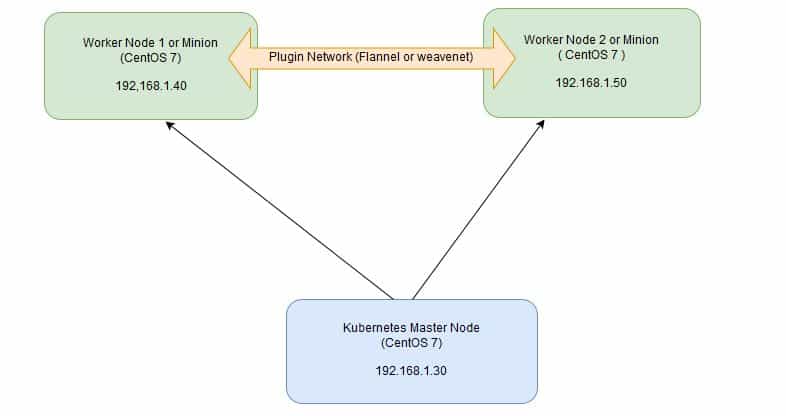

Sudo yum install -y kubelet-1.21.2 kubeadm-1.21.2 kubectl-1.21.2 -disableexcludes=kubernetes # Install the kubernetes packages kubelet, kubeadm and kubectl (v1.21.2) Sudo sed -i 's/^SELINUX=enforcing$/SELINUX=permissive/' /etc/selinux/config # Set SELinux in permissive mode (effectively disabling it) # Add the kubernetes repository to the CentOS system:Ĭat <

Kubeadm will not install or manage kubelet or kubectl for us, so we will need to ensure they match the version of the Kubernetes control plane we want kubeadm to install for us. kubectl: the command line util to talk to your cluster.kubelet: the component that runs on all of the machines in your cluster and does things like starting pods and containers.kubeadm: the command to bootstrap the cluster.You will install these packages on all of your machines:

# If you apply this change make sure to restart containerd again Kubernetes announced that it is deprecating Docker as a container runtime after v1.20, that’s why we will show here how you can install and use containerd instead. If any other two or more runtimes are detected, kubeadm exits with an error. This is needed because Docker 18.09 ships with containerd and both are detectable even if you only installed Docker. If both Docker and containerd are detected, Docker takes precedence. The following table lists container runtimes and their associated socket paths: Runtime If we don’t specify a runtime, kubeadm automatically tries to detect an installed container runtime by scanning through a list of well known Unix domain sockets. Installing runtimeīy default, Kubernetes uses the Container Runtime Interface (CRI) to interface with our chosen container runtime. Sudo cat /proc/sys/net/bridge/bridge-nf-call-ip6tablesĪny port numbers marked with * are overridable, so you will need to ensure any custom ports you provide are also open. Sudo cat /proc/sys/net/bridge/bridge-nf-call-iptables To load it explicitly, call sudo modprobe br_netfilter.Īs a requirement for your node’s iptables to correctly see bridged traffic, you should ensure -nf-call-iptables is set to 1 in your sysctl config, e.g. This can be done by running lsmod | grep br_netfilter. Make sure that the br_netfilter module is loaded. If these values are not unique to each node, the installation process may fail. Kubernetes uses these values to uniquely identify the nodes in the cluster. It is very likely that hardware devices will have unique addresses, although some virtual machines may have identical values.
#Kubeadm centos minimal mac#
You can get the MAC address of the network interfaces using the command ip link or ifconfig.Verify the MAC address and PRODUCT_UUID are unique for every node Make sure you run all the checks and commands covered in “STEP 1” on all cluster nodes.For other operating systems, the steps will be slightly different. All the steps given here are for CentOS machines only.OR use the following command without editing the file You MUST disable swap in order for the kubelet to work properly. Certain ports are open on your machines.Unique hostname, MAC address, and product_uuid for every node.
#Kubeadm centos minimal full#

The best Kubernetes architecture for your organization depends on your needs and goals. Sometimes, there are advantages to running Kubernetes deployments on-premises. However, the cloud-native concept does not exclude the use of on-premises infrastructure in cases where it makes sense. It is often described as a cloud-native technology, and it certainly qualifies as one. Allowing for high scalability, reliability and availability, it is broadly used and available on all cloud providers. The container orchestrator Kubernetes is a very powerful tool in the modern cloud-based world.


 0 kommentar(er)
0 kommentar(er)
